I’m a nerd from a family of nerds, and I grew up reading a lot of science fiction. Specifically, I grew up reading a lot of my mother’s science fiction collection, which included a lot of brilliant writers, some of whose works are not as well-known today as they once were.
Since this is a pity, I’d like to introduce you to some of the books that affected me strongly growing up, and influenced me as a reader—and probably also as a writer.
Phyllis Eisenstein, Sorcerer’s Son (1979)
This is a delightful little book about two sorcerers, a demon, and their child. (Yes, it’s complicated.) One of the sorcerers has extremely powerful nature magic; she’s a woman with a gift for working with woven things, and she spends her time nerding out about botany, mostly. The demon is a decent-hearted sort who is bound by the second sorcerer. Because that other sorcerer is a nasty piece of work who gets his power from enslaving unwilling demons, and who assumes that everybody else is a nasty piece of work too, he lays a lot of complicated plots in order to defend himself from enemies that don’t exist until he creates them. This works out poorly for him in the long run, because his kid takes after his mother and the demon.
Diane Duane, The Door into Fire (1979)
Herewiss is a sorcerer who is one of the very few men in history to have been born with access to the blue Fire, the most powerful magic of all, which burns up the life force of its users. The problem is, that he can’t channel it to do anything useful because it breaks every sword he creates—and his lover, Prince Freelorn, has been trapped by evil forces in a tower and needs rescue. So off Herewiss goes, hoping he might figure out how to use his gifts in time to save his beloved. Along the way he meets Sunspark, my favorite semi-equine fire elemental personified star in fantasy. Queer and nontraditional relationships abound.
The second book in the series has really fantastic dragons.
Phyllis Ann Karr, The Idylls of the Queen (1982)
Sir Patrise has been murdered, and it’s up to Sir Kay and Sir Mordred to find Sir Lancelot so he can prove Queen Guenevere’s innocence, or she’ll be burned at the stake.
Neither of them much likes Sir Lancelot, unfortunately. And nobody has any idea where he’s wandered off to this time, as he’s not exactly the most reliable dude around…
I love this book so much, you guys.
Jo Clayton, Diadem from the Stars (1977)
There’s a girl in a profoundly misogynous society, whose mother was an offworlder. She gets her hands on a powerful alien artifact that she doesn’t know how to use, and makes her escape. This is a feminist revisioning of the planetary romance, and it shows the influence of Jack Vance and similar authors—the lone wanderer in a post-technology barbaric world that hovers somewhere between magic and superscience.
Definitely on the grimdark side, this might appeal to fans of N.K. Jemisin’s Broken Earth trilogy.
Joy Chant, Red Moon and Black Mountain (1970)
On the face of it, this is a fairly standard portal fantasy story about three children who find themselves in a fantasy world and are chosen to save it. Initially published as adult fantasy, it would probably be considered YA now, because of the age of the protagonists. The strength of this book is not necessarily the plotting, which is a little bit Narnia Meets The Lord Of The Rings, but the glorious prose, the nuanced characterizations, and the very modern willingness to take moral ambiguity on the chin.
Jessica Amanda Salmonson, Tomoe Gozen (1981)
A historical fantasy set in Japan, a magical/fantastic biography of the real 12th-century female samurai of the same name, this book (the first in a trilogy) was the first non-Western fantasy I ever read. I was ten years old, and it completely blew my mind and made me realize that there were whole realms of human experience that didn’t get reflected in most of the books I was exposed to. I suspect that feeling, that sense of “here is something really and completely awesome that has been erased from my awareness” is one of the things that sent me looking for more diverse writers and stories.
Tomoe Gozen also appears in C. J. Cherryh’s 1988 novel The Paladin, which I also remember loving and really need to reread.
Suzy McKee Charnas, Motherlines (1978)
This is not an easy book to read on so many levels. It’s postapocalyptic, anthropological science fiction steeped in the despair and rage of women in the seventies, of feeling trapped by societal roles and needing to overthrow the whole shebang in order to win free. There was a whole subgenre of these books at the time, and this was my favorite of them. I also read this one inappropriately young, as it has some legendarily intense content.
I turned out okay!
It is full of gritty, awesome women, and so many lesbians. Recommended for fans of Richard Morgan’s THE STEEL REMAINS.
Vonda McIntyre, Dreamsnake (1978)
Another postapocalyptic SF novel about a young wanderer from the era when the only future so many of us could see was a nuclear one. The journeyman Healer Snake is out and about in the world when tragedy strikes, sending her on a quest that takes her through a number of remnant societies. This book is a solid adventure novel, fast-paced and full of incident, but it also deals strongly with thematic issues of class and education and personal responsibility and ethics. Includes a nonbinary character and nontraditional relationship structures.
A few notes:
I’ve limited this list to books that I read before high school, and read multiple times, and that I don’t generally hear widely discussed anymore. (Which is why several of my favorites weren’t mentioned here.) I also made the decision to limit it to women to narrow the field, and because I am a woman who often writes about women, and I suspect that in that, these authors influenced me strongly.
Also, it seems to me that women are less likely to be remembered, mentioned, and listed, and so their works are more likely to be forgotten after a few years.
This is a very white list, reflecting the demographics of the field at the time, and the sort of books that were available to my very young self: I didn’t encounter Octavia Butler and Tananarive Due until high school or college. I highly encourage readers to seek out their work, which is brilliant.
One thing I notice in compiling it is how queer some of these stories are. I think it’s fairly frequently forgotten that writers of SFF have been producing works about queer characters for generations—probably for the same reason that we forget that women writers have been producing SFF for as long as SFF has been a thing.
Originally published in March 2018.
 Elizabeth Bear was the recipient of the John W. Campbell Award for Best New Writer in 2005. She has won two Hugo Awards for her short fiction, a Sturgeon Award, and the Locus Award for Best First Novel. Bear lives in South Hadley, Massachusetts, with her husband, novelist Scott Lynch. Stone Mad, the sequel to her novel Karen Memory, is available now from Tor.com Publishing.
Elizabeth Bear was the recipient of the John W. Campbell Award for Best New Writer in 2005. She has won two Hugo Awards for her short fiction, a Sturgeon Award, and the Locus Award for Best First Novel. Bear lives in South Hadley, Massachusetts, with her husband, novelist Scott Lynch. Stone Mad, the sequel to her novel Karen Memory, is available now from Tor.com Publishing.










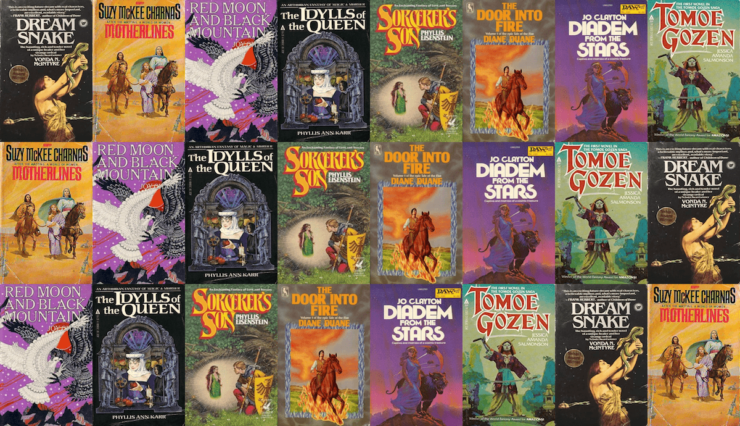
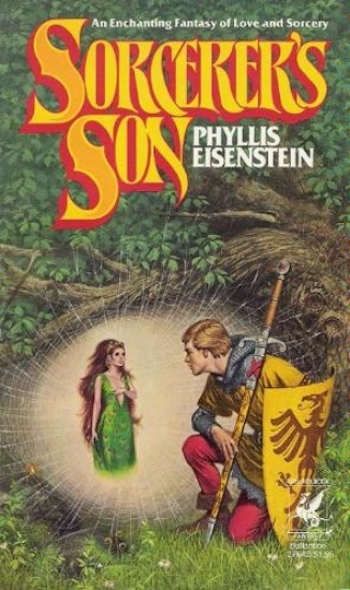
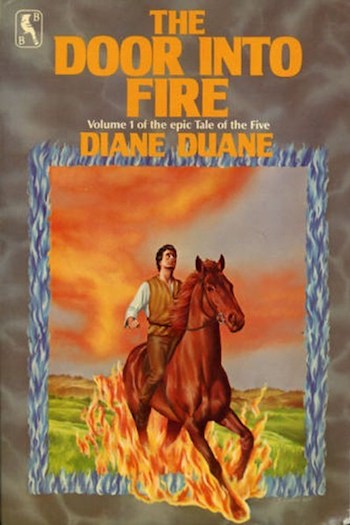
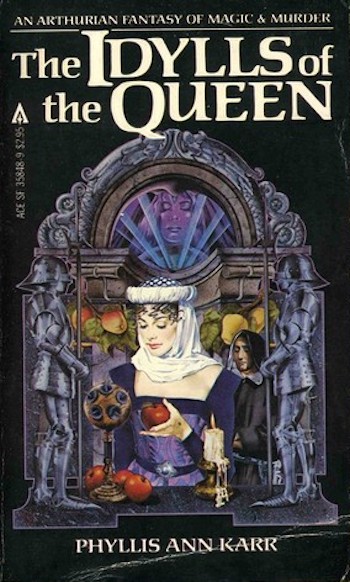
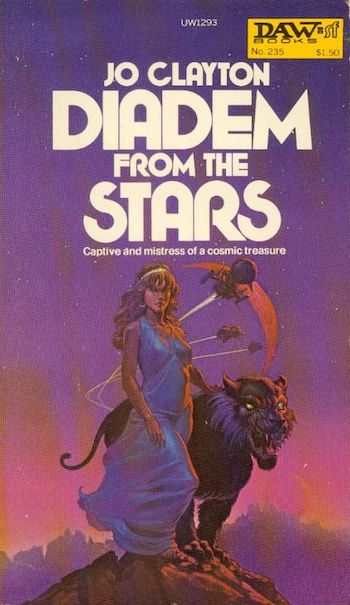
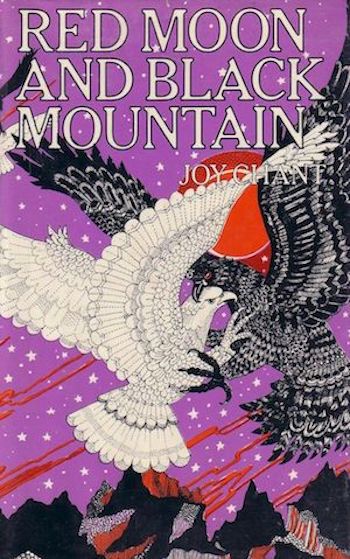
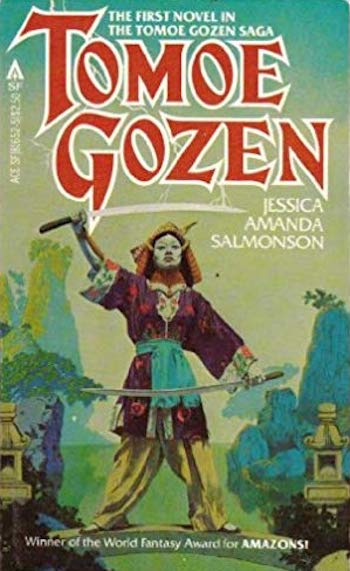
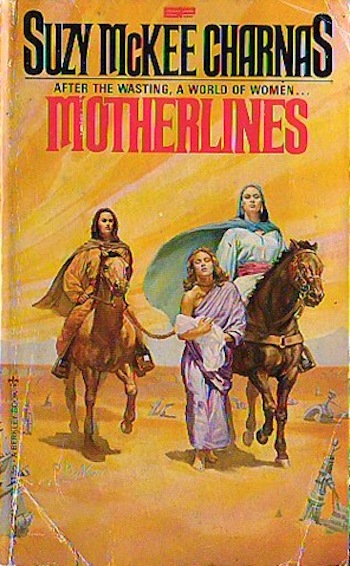
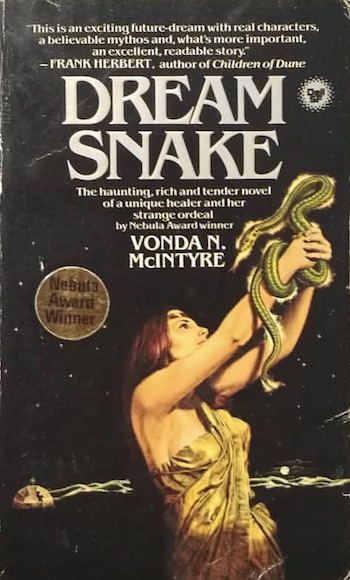
It’s been a while since I checked but the lack of Eisenstein ebooks is quite vexing.
Always happy to see love for Jo Clayton, although I didn’t really discover her until the 1990s.
And I’m cautiously optimistic that we might actually be seeing the fourth book in Diane Duane’s Door Into Fire series sooner rather than later.
My own list, if I put one together, would probably include Jane Gaskell (I think she was mostly published in the 1960s, but I didn’t read her books until the 1970s or 1980s) and Louise Cooper (one of the many fine authors I was introduced to by a book review in Dragon Magazine).
I’m working my way through Gaskell’s Atlan books. Even taking into account that poor Cija was raised in a hermetically sealed container by people uninvested in her well-being, she’s not overgifted with insight into other people’s motives.
Yeah, Atlan may be one of those situations where I’d have to point out that “personal classic” <> “good”, at least in all cases.
Dreamsnake is one of my very favorites, and I love Louise Cooper. I would add Gael Baudino to this list, her first book, “Dragonsword” was published in 1988.
All books I’ve enjoyed and need to add to the To Be Re-Read list.
There was supposed to be a third book in the Eisenstein series just recently– THE WALKER BETWEEN WORLDS — but I’m not sure it ever came out.
I think maybe the first eight chapters were published? But I don’t see the full novel on my usual sources.
[Plaintive sigh] I just went to look up the status of Door into Starlight for the first time in 10 years. Same as when I first started the series back on the 80s.
I remember Dreamsnake, besides having some gorgeous imagery, repeatedly illustrating, “Check your assumptions or they’ll bite you in the butt.”
Oh, this is so cool, thank you! I vaguely remember a couple of these, am going to pick one and order it from the library!
Motherlines was one of the five James Tiptree, Jr. Retrospective Award winners. One of the others was Walk to the End of the World, the first book in the same series. I sure hope these classics are not forgotten. There are two more books in the series, The Furies and The Conqueror’s Child (another Tiptree Award winner). They helped me learn some key things about feminism I might otherwise have been oblivious to. Importantly, the series offers a vision of hope that is not in denial about the challenges we still face. And by the way, they are amazing adventures with memorable characters and innovative plots. What more can you ask for?
Most of most these aren’t available as ebooks. However the Karr is currently very cheap at Amazon. Slightly more expensive elsewhere but a bargain nonetheless. The Clayton & the Charnas are available as well and Duane has lots of her own books available as ebooks at her on website. Weirdly, Depresmsnake is available in every conceivable medium except ebook.
MKK— hurrying away now to read the Karr
Lion’s Heart and Lion’s Soul by Karen Wehrstein would be my picks for this list. Deep, engaging characters, Alexander esque plot, but with real adversity, queer polyam protagonists… Really revolutionary an way ahead of it’s time.
Not all forgotten! I reread the Clayton, “Diadem” series occasionally (and I’ve always loved how similar that cover is to Cherryh’s , and got round to Dreamsnake only recently when I set myself the challenge of reading all the Hugo winners. So far, Dreamsnake has been the only one, that I hadn’t already read, that really rocks my boat.
@MaryKay: Dreamsnake must be available as an ebook somewhere, because that’s how I read it.
Eisenstein and Duane are very much on my re-read list. I can’t remember much of the Joy Chant, I think it was eclipsed for me by Guy Gavriel Kay’s Fionavar.
I’m pretty sure I saw the Clayton for sale in ebook (cheap, even) recently.
Frustratingly, the only Clayton available in eBook format are the Skeen trilogy, the Duel of Sorcery trilogy and the first five Diadem novels.
On the plus side, Clayton’s books were published by DAW back when print runs were huge. The odds of finding decent copies in used book stores is pretty good.
I would recommend anything by HM Hoover. Most of it would classify as YA these days. My favorites are The Rains of Eridan (female protagonist! she’s a scientist! no love interest!) and The Lost Star.
The essential problem I see with proposing books that should have been on this list is that it is a personal list of books important to Elizabeth Bear and those persons who are not Bear may lack the specific expertise needed to point out books important to the author that they overlooked.
That said, did you ever read the Women of Wonder series?
I’m mildly pleased to note that I’ve read four of these (and liked all of them) and have heard of all the rest (except possibly the Phyllis Ann Karr book, though I’ve read others by her).
Tomoe Gozen also appears in C. J. Cherryh’s 1988 novel The Paladin, which I also remember loving and really need to reread.
The Paladin is awesome (I seem to re-read it every five or ten years), but Tomoe Gozen is not in it.
Re Cherry’s the Paladin, I would say that the female main character is clearly based on Tomoe Gozen but isn’t actually meant to be her.
The Idylls of the Queen sounds like a lot of fun; I’ll have to look that one up!
There is an unpublished 3rd volume in the Sorcerer’s Son series…The City in Stone (completed but unpublished).
There was a whole thing about a SF publisher who went bankrupt, taking a lot of rights with it.
I emailed Phyllis Eisenstein a couple years ago, telling her how much I enjoyed her work, and trying to get news about
City, but at that time she didn’t have any news.
I’d still really like to read it.
Sorcerer’s Son is one of my favorite books! I still search for information about The City in Stone, hoping beyond hope that someday it will be released.
Re Cherry’s the Paladin, I would say that the female main character is clearly based on Tomoe Gozen but isn’t actually meant to be her.
No, I don’t think that works. The historical Tomoe Gozen was born into a high-ranking samurai family, received the typical training of her class and gender, and took part in her clan’s politics and wars. Taizu (the female character in The Paladin) is a peasant who has lost her family, and makes an arduous trek to seek out Master Saukendar and beg (or browbeat or blackmail) him into training her so she can seek revenge against the lord whose raids caused her family’s deaths. They’re very different characters, similar only insofar as they’re both “medieval East Asian women warriors whose names begin with ‘T’”.
I loved Red Moon and Black Mountain and read it several times when it was first published. Sometime soon I’ll have to re-read it and see how well it holds up all these years later.
@23, @27: Cherryh’s Paladin is, for me, too, one I can’t resist re-reading.
I also liked Jessica Amanda Salmonson’s Tomoe Gozen; but she struck me as a big, muscular woman, while Cherryh’s Taizu is a wiry little peasant with a scar on her face. (The original paperback cover by Gary Ruddell is stunning.)
@2, @3, @@.-@: Talk about a page turner! I was so disinclined to stop reading Jane Gaskell’s “Atlan” books I did something I never did before or since. I read while driving back to University on the Palisades Interstate Parkway after a weekend at home.
Have you ever read any Janet Morris?